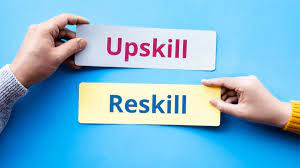Why reskilling and upskilling at work are important
Businesses continually require proficient talent to align with market demands, a constant that remains unaltered. However, the dynamic nature of market conditions, evolving technologies, and shifting organizational requisites dictate that sought-after skills will undergo transformations. Throughout the annals of history, catalysts like globalization have reconfigured the very fabric of employees' roles. The advent of technology, including the likes of AI, looms even larger, poised to enact a revolution of unprecedented proportions upon these roles.
In the near future, certain vocations may fade into obscurity, while many others will assume an altered guise compared to their present state. Furthermore, job profiles yet to be envisaged will emerge as indispensable components. These compelling factors should serve as a stark reminder that businesses cannot afford the luxury of complacency. Thankfully, astute leaders possess a potent duo of tools for nurturing talent: upskilling and reskilling.
The proactive act of upskilling and reskilling employees primes enterprises to confront ongoing transformations head-on. These undertakings concurrently equip businesses to navigate impending paradigm shifts, which might necessitate heightened levels of agility. As businesses strategize to adapt to the fluctuating landscape of talent requirements, a constellation of factors converge to underscore the quintessence of upskilling and reskilling in the year 2023.
Conclusion
As the business landscape continues to change, organizations need to understand the importance of upskilling and reskilling programs. Such programs can help organizations thrive despite economic uncertainties and pivot with changing demands.
Credit: gloat.com





Comments
Post a Comment